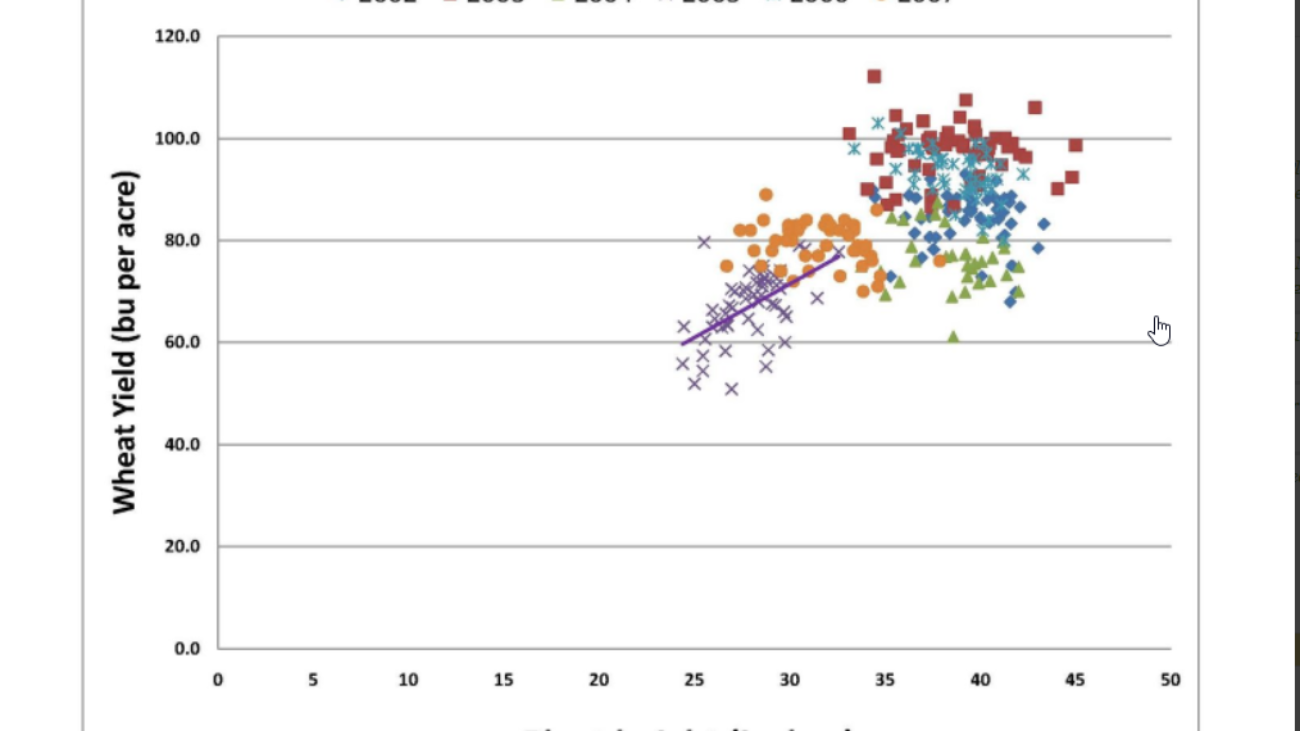What an awesome rain. This along with the warmer temperatures has kicked the wheat into high gear. I have been hearing reports of wheat boot-head on the east side of our territory. I am seeing a lot of flag leaves out west here as well. Everyone has had concerns of the plant height. One common question, will this result in poor yields. My answer to this is it actually depends. First we need to look into what caused the wheat to be short in stature. Plant height can be affected by a number of things including water, temperature and solar radiation. This kind of spells out the why. I will now look a little closer at the correlation between plant height and yield. Notice the chart below which is from the Northern Great Plains. There are 6 cropping years represented here and only one time does yield and plant height produce a positive result. This suggests that height in and of itself has no direct bearing on yield. Understand that our head and spikelet count has been determined. The plant leaf area index threshold is much more important that plant height. This is defined as the total one sided leaf area per unit of surface area. We need enough light receptivity to be able to fuel all the internal processes to fill the head. If we have proper LAI then we will need the water and nutrients to complete he cycle.
I do not want anyone to assume I am saying that this is going to be a great crop. Understand, this crop has had a very tough life and as such we have impacted yield. I just wanted everyone to understand that shorter wheat does not necessarily mean poor wheat. I will mention that if we have a shorter crop our residue amount will be less than desirable. In fields with poor stands we may need to consider some sort of cover to allow us some residue for the winter. Another year another set of challenges welcome to Northwest Kansas, Eastern Colorado.

